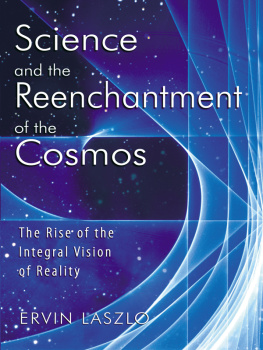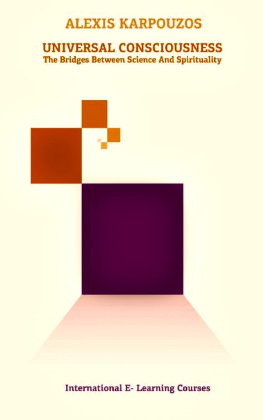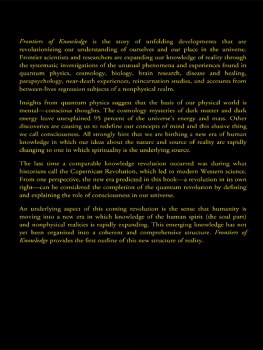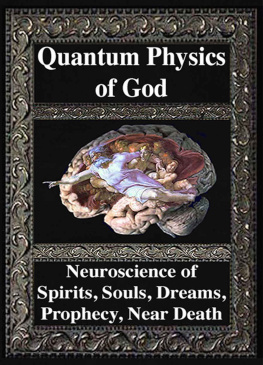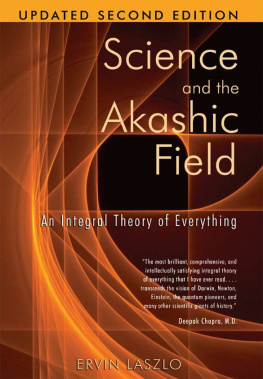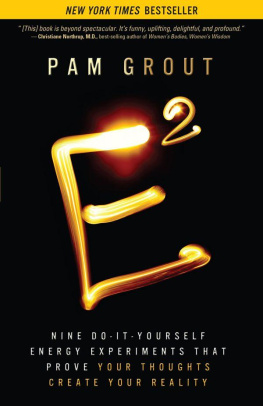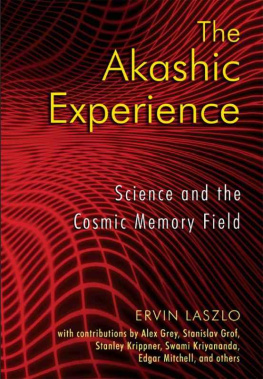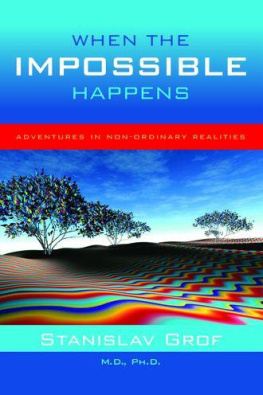Science
and the
Reenchantment
of the
Cosmos
The Rise of the Integral Vision of Reality
Ervin Laszlo

Inner Traditions
Rochester, Vermont
Contents
Introduction
At the cutting edge of contemporary science a remarkable insight is surfacing: the universe, with all things in it, is a quasi-living, coherent whole. All things in it are connected. All that happens in one place also happens in other places; all that happened at one time happens at all other times. And the traces of all things that ever happened endure; nothing is entirely evanescent, here today and vanished tomorrow.
The universe is not a world of separate things and events, of external spectators and an impersonal spectacle. It is an integral whole. Unlike the disenchanted world of classical physics, it is not fragmented into material things and the disjointed domains of life and mind. Matterthe kind of stuff that makes up particles joined in atoms joined in molecules joined in cells joined in organismsis not a separate kind of thing, and it doesnt even have a reality of its own. Although it appears solid, in the last count matter is energy bound in quantized wave-packets and these packets are further bound together to create the vast and harmonious architecture that makes up the world. The widespread ideathat all there is in the universe is matter, and that all matter was created in the Big Bang and will disappear in a Big Crunchis a colossal mistake. And the belief that when we know how matter behaves we know everythinga belief shared by classical physics and Marxist theoryis but sophistry. Such views have been definitively superseded. This universe is more amazing than classical scientists, engineers, and Marxists held possible. And the connectedness and oneness of the universe is deeper and more thorough than even writers of science fiction could envisage.
The current finding of the universes wholeness is the fruit of sustained investigation, based on observation and tested by experiment. It provides an entirely different image of the world than the mechanistic, materialistic and fragmented image we were taught in school. A cosmos that is connected, coherent, and whole recalls an ancient notion that was present in the tradition of every civilization; it is an enchanted cosmos.
The reenchantment of the cosmos as a coherent, integral whole comes from the latest discoveries in the natural sciences, but the basic concept itself is not new; indeed, it is as old as civilization. In ages past the connectedness and wholeness of the world was known to medicine men, priests, and shamans, to seers and sages, and to all people who had the courage to look beyond their nose and stay open to what they saw. Theirs, however, was the kind of insight that comes from mystical, religious, or aesthetic experience and was private and unverifiableeven if it appeared certain beyond doubt. Now, in the first decade of the twenty-first century, innovative scientists at the frontiers of science are rediscovering the integral nature of reality. They lift the private experiences that speak to it from the domain of unverifiable intuition into the realm of interpersonally verifiable public knowledge.
The emerging vision of reality is more than theory, and it is of interest to more than scientists. It gets us closer than ever before to rending apart the veils of sensory perception and apprehending the true nature of the world. Even in regard to our life and well-being, this is a happy rediscovery: it validates something we have always suspected but in modern times could not express (nor, unless we were poets or lovers, did we even try). This something is a sense of belonging, of oneness. We are part of each other and of nature; we are not strangers in the universe. We are a coherent part of a coherent world; no more and no less so than a particle, a star, and a galaxy. Only, we are a conscious part of the world, a being through which the cosmos comes to know itself. This insight is a sound basis for recovering a deeper sense of meaning in lifeand a new and more reliable orientation at this crucial juncture in history.
We can live up to our potentials as conscious beings: we can come to know the reenchanted cosmos. Not only is this not impossible, it is not even particularly difficult. Beyond the complex deductions and abstruse mathematics of the new sciences, the basic concept of a coherent, connected, and integral universe is simple and meaningful; indeed, it is beautiful. When we make it our own, we come back to where our fathers and forefathers have been before us. But we come back with more assurance than they have had. Cutting-edge science tells us that we do not delude ourselves: we inhabit an integral, whole universe, and we are part of it. We are at home in the cosmos.
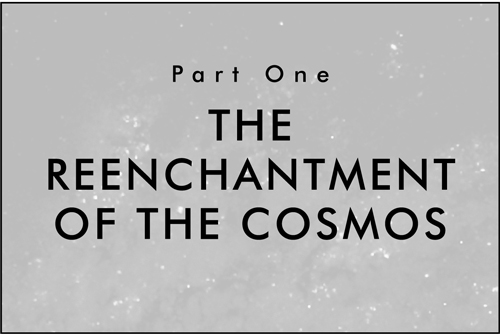
CHAPTER ONE
The Amazing Coherence of (Nearly) Everything
Whether we like it or not, science enjoys credibility in the eyes of the general public. Most people believe that what science tells us about the world is true, or at least it is likely to be true. Thus, understanding what science tells us about the world is important: it is important both as a possible source of truth about the world and as what most people accept as the truth, or the likely truth, about it.
However, what most people do not realize is that what science says about the world is subject to change, even fundamental change. Indeed, in our day sciences concept of the world is changing; it is changing fundamentally. It is not what scientists discussed but a few decades ago, and is far different from what we learned in school. Ours is not the kind of world our common sense would expect: a simple, orderly world where things behave as solid material objects should behave and are either here or there and not in many places at once. Nor is the effect of one thing necessarily limited to just one or a few other things. True, such conditions hold in our immediate surroundings, but they turn out to be limited to certain orders of size and magnitude, and certain dimensions of speed and distance. Beyond these dimensions the world becomes more and more strange. It is with good reason that a widely discussed film asks what the bleep do we know? and suggests that it is our consciousness that creates reality...
However, even if the way the world behaves is surprising, it is neither arbitrary nor incomprehensible. Scientists have gone a long way toward working out its underlying dynamics and showing that it is not meaningless and haphazard, but has a logic of its own. Notwithstanding the challenge to common sense, the universe proves to be meaningful; indeed, more meaningful than the disenchanted world where inert matter moves impersonally against a background of passive space. The reenchanted world is a harmonious structure where all things interact with all other things and together create a coherent whole. This whole is not a mechanical aggregate, for it is not readily decomposable to its parts. It is an integral whole, where to some extent and in some way all things interact with all other things. The scope of this interaction transcends the hitherto known limits of time and space. It is nearly instantaneous over any known distance and is conserved over any known span of time.
The findings that delineate the new picture of the world come from almost all of the empirical sciences: from physics and cosmology, from the life sciences, even from consciousness research. Although their subject matters differ, their findings have a common thrust. They disclose interaction
Next page
